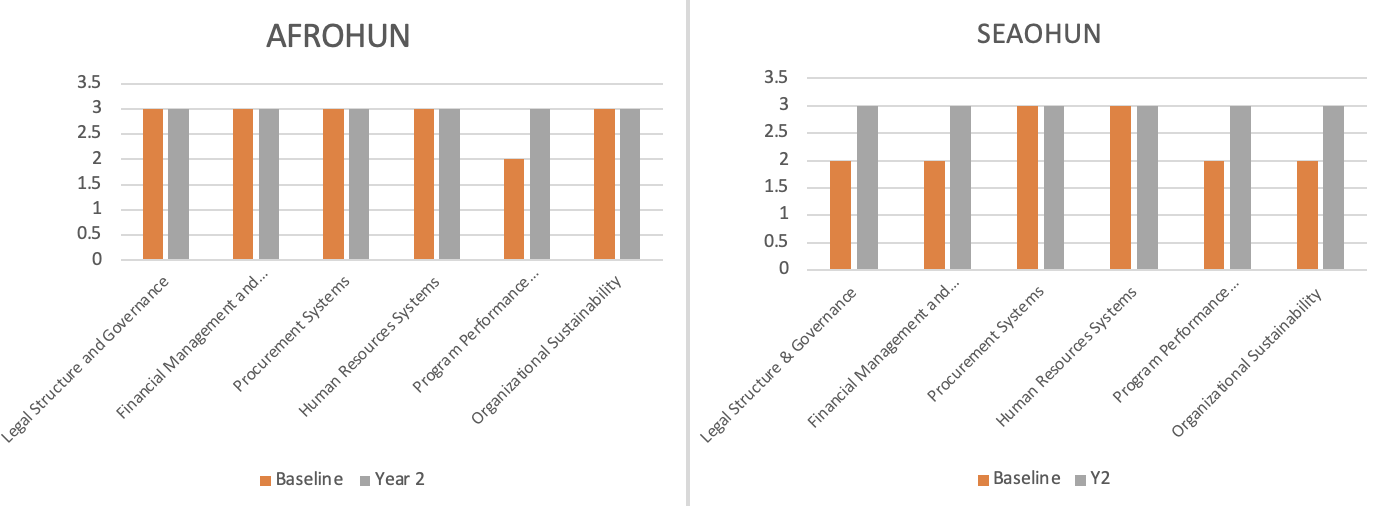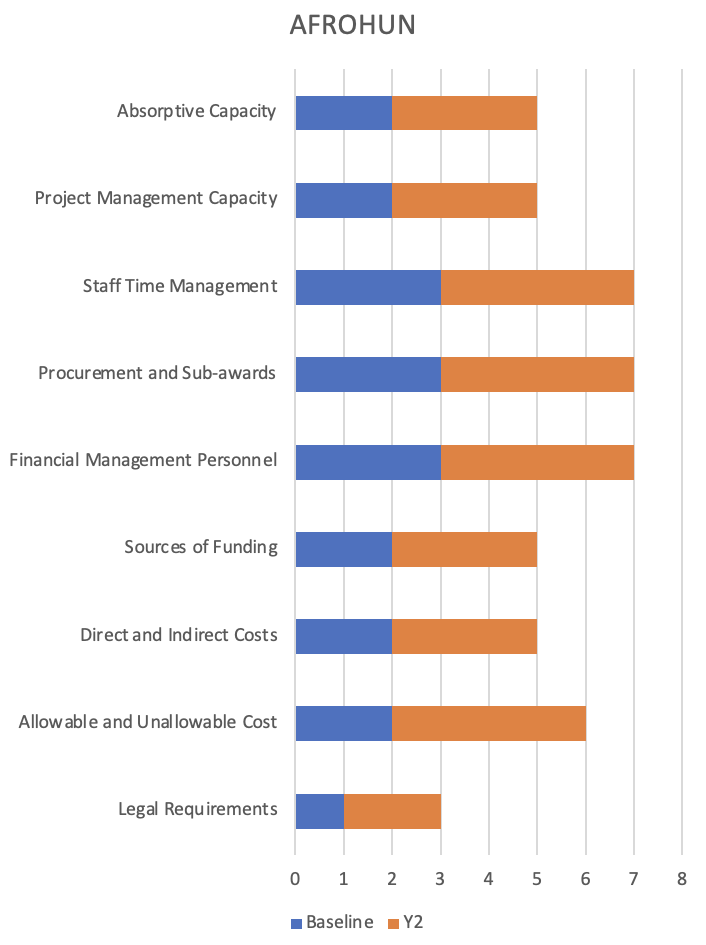A New Vision for Development
Readying the Networks for Direct USAID Funding to Support Lasting Capacity
Over the past decade, just six percent of USAID assistance was awarded to locally-based partners. Though often considered risky, challenging, and time consuming, the value of partnering directly with locally-based organizations and institutions, those on the frontlines of their own development challenges, can far surpass these administrative obstacles and reap major rewards.
Aligned with USAID’s renewed commitment to provide at least a quarter of agency funds directly to local partners within the next four years (Administrator Power, 2021). The OHW-NG project is supporting AFROHUN and SEAOHUN in their journey towards self-reliance through successful receipt and management of direct USAID funding.
“Around the start of Year 3, AFROHUN and SEAOHUN will be able to pass an international audit, successfully complete a USAID pre-award survey, and meet a set of pre-determined benchmarks that will be agreed upon in advance, thereby demonstrating sufficient capacity to become direct recipients of USAID funding via transition awards.” –USAID One Health Workforce – Next Generation Project Cooperative Agreement
In Year 2 (2020-2021), both AFROHUN and SEAOHUN accelerated progress towards these goals. As of Sept 30, 2021, both Networks had three consecutive years of clean audits conducted by an international firm. Both Networks had improved their capacity such that all major criteria on benchmarking using the USAID Non U.S. Organization Pre-award Survey (NUPAS) tool scored a “3” or higher, representing a low risk profile for USAID direct awards. Lastly, AFROHUN completed all predetermined benchmarks to start the transition process, and SEAOHUN completed all but three benchmarks, which will be completed in early Year 3 (Figures 1 and 2).
Figure 1. Overall improvements to major capacities as defined in the USAID NUPAS, 2019-2021
These capacity changes have lasting impacts on each Network’s organizational sustainability. For example, strengthening each Network’s capabilities under the NUPAS Criteria of “Governance and Legal Registration” resulted in new or improved Executive Board Bylaws and other Board governance materials, which expanded the membership and diversity of the Boards, codified best practices, and improved committee functioning. This improved the Board’s strategic oversight and resource mobilization roles and improved the visibility of the Networks.
Figure 2. Improvements that resulted in a full stage increase in capacity on the USAID NUPAS, 2019-2021
Work under the NUPAS Criteria of “Procurement Systems” resulted in each Network creating the first-ever sub-awards, developing their first sub-award management manuals, and receiving ongoing mentorship on how to conduct effective sub-recipient monitoring. This work not only facilitated the work of OHW-NG Project, it also provided the Networks with an important capability that they can make available for other funders and partners, as evidenced by the recent development of USAID STOP-Spillover and Chevron partnerships, where sub-awards are now being used to perform the work.
Under the NUPAS Criteria “Financial Management and Internal Control”, the Networks shored up key areas of deficiency, including by establishing variance analysis and cash flow budgeting procedures for the first time, upgrading financial accounting software, enhancing staff capacity on allowable and unallowable costs and developing plans for appropriate documentation of indirect costs across multiple projects. Further, the Networks were mentored on improving financial expenditure reporting, and tracking and responding to audit findings in a timely manner, and to institutionalize new procedures in their Finance Manuals. These practices are ensuring both Networks continue to manage donor funds responsibly and with consistency, beyond the life of the OHW-NG Project.
A major focus on strengthening human resources for both Networks also yielded lasting results. SEAOHUN recruited two program managers and a dedicated manager of resource mobilization, which expanded their capability for future activities, while AFROHUN recruited an advisor and several librarians to manage knowledge management activities. SEAOHUN also established an automated, cloud-based payroll system, while AFROHUN adopted a new tracking software that manages timesheets and leave, both ensuring more scale-able models of efficient, accurate human resource recordkeeping.
Both Networks also strengthened their labor activity systems to be capable of appropriately repurposing and accounting for the level of effort of their staff on different funded awards. AFROHUN for example, further developed a comprehensive staffing plan for the scale-up of funds under the OHW-NG; this methodology can now be used to plan for any new activity or funds.
“It is thrilling to everyone here to see the positive progress made and indeed this can be attributed to our partnership under Objective 3 in the OHW-NG.” –AFROHUN Senior Official
Finally, network investments in strengthening work planning, project management and use of monitoring and evaluation data, all encouraged under NUPAS Criteria Program Management, are helping these institutions more effectively plan, manage and evaluate projects for multiple funders. AFROHUN adopted a new project management and indicator tracking software, which is scalable for new projects, while SEAOHUN undertook an intensive project management training across the Network and designed a new project management manual to systemize best practices.
Both Networks exercised more independent work planning and reporting this year as well, learning best practices that will extend to future initiatives.



